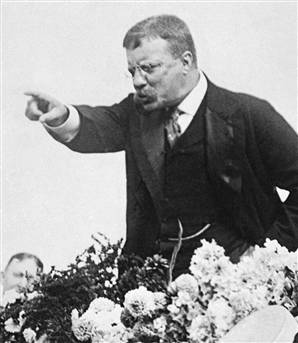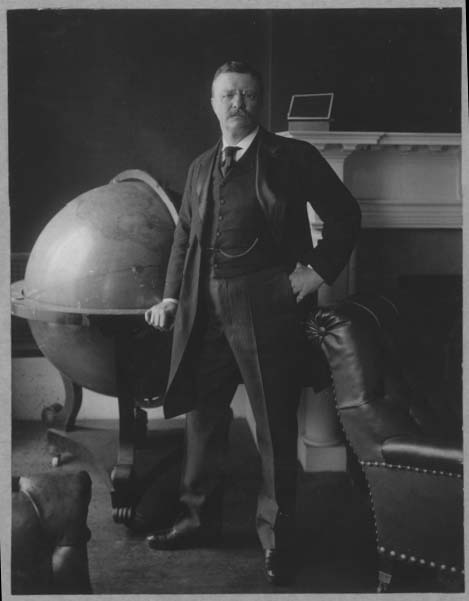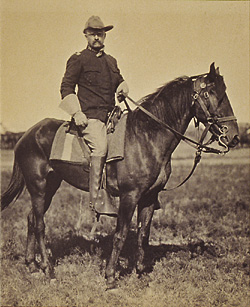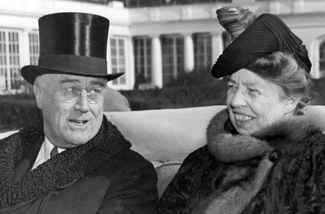Speak Softly & Carry a Good Stick
Let’s talk craftsmanship.
Being a good negotiator in the thick of things takes a lot of hard work and awareness of what you and the other side are after. But if you have the luxury of time and the ability to prepare, you can create a beautiful deal that best meets your interests, sufficiently entices the other side and holds the door open to future deals.
To do so you need to master two things: You must speak softly and carry a good stick.
Good negotiations are made up of two main parts: effective communication and significant consequences for bad faith or inaction. When we talk about negotiation skills we usually emphasize the talking softly side; listening, asking questions about their interests and pointing out how a particular deal fulfills their interest. (For good resources on communication when negotiating look here, here and here.)
If you want someone to stay in a stressful negotiation or follow the agreement when times get tough, however, you also need to have some powerful consequences, or sticks, to back you up.
Carrots AND Sticks
The phrase “carrots and sticks” comes from the idea that to get a mule to work you need to offer it enticement or rewards, carrots, and punishment when it doesn’t work, “sticks.” Someone, somewhere, at sometime, decided it’d be great to talk about doing business with someone as if you were driving a mule. And so we get the concept of carrots and sticks.
Many people don’t like to talk about sticks — enforcement and consequences– because they think it sounds mean. Plus, it’s a nice idea that you’d be able to encourage someone to agree with you purely through positive reinforcement and active listening skills. But you can’t. And the reason you can’t is because of something called “loss aversion.”
Loss Aversion is the human psychological tendency to avoid loss at all costs. This reaction is so strong that in seemingly irrational situations we will choose to avoid loss over the possibility of gaining a guaranteed result. The ability to avoid losing resources is more motivating than the opportunity to gain them.
But you can’t lean too heavily on the loss aversion stick if you want the other side to play with you. If the threat of loss plays too big a role in your negotiation, the other side might deem the negotiation too risky and walk away. If they can’t walk away immediately, they’ll be looking for the first exit they can find.
So a good stick is balanced — just as heavy as it needs to be to do the job , but not so heavy as to scare the other party away. It also comes with a handful of carrots — things the other side actively wants. Properly used, the carrots entice interest in the deal and the sticks keep them from leaving once they’re negotiating.
Picking the Right Stick
To pick the right stick for your negotiation — that is, one that will discourage the other side from walking away or breaking the deal, but doesn’t scare them away — you must understand the other party’s interests.
Too often people pick sticks that focus on punishing the other side based on a generic understanding of what people want to avoid. But you’re not negotiating with “people”; you’re negotiating with a particular person or group of people. You have to make sure your sticks are meaningful to them.
An effective stick makes it easier for the other party to get what they want if they work with you.
What does that mean?
Let’s say you’re negotiating with Frank who needs your work for a new website for his company’s VIP customers. His boss, Eleanor, is adamant about the timeline for the project. It must launch January 1, 2012.
When Frank gives you the contract it has a basic timeline that provides dates for you to deliver an initial review and a final draft.
What sticks might you use to make sure this project doesn’t turn out to be worse than Pearl Harbor, the movie?
1. Add an additional date to the timeline: the date by which the company must OK the initial draft with any agreed upon changes so you can move on to finalizing it. If you don’t get that OK, you can’t move on to the next step.
2. Add an additional document to the contract that is a sign-off sheet showing written approval of your work with agreed upon modifications by Frank and Eleanor. Add language to the contract saying the sign-off sheet must be returned to you (by the date in #1) before you can begin finalizing the work. (An example of such a nifty document can be found here.)
3. Add a fee for any changes made after they’ve approved the project for finalization. Any changes made after you get that sign-off sheet back? They’ll be done at 200% your hourly rate in the contract.
Each of those sticks makes it easier for Frank to get what he wants — a great product on the timeline his boss wants — by working with you. They encourage him to communicate, and discourage him from being wishy-washy about decisions, or sitting on the changes until the last minute. Each stick makes it clear that there are consequences if he doesn’t live up to his end of the bargain, and those consequences get him further away from what he wants.
For sticks to be effective in a negotiation, they don’t have to be huge and all powerful. You don’t need the biggest, toughest, meanest stick you can conjure up. You just need one that works. And the easiest way to build a stick that works is by listening to the other side’s interests.

So do one better than Uncle Teddy: Speak softly and carry a good stick.
Featured image is from the Library of Congress by way of History.com.
Categories: Negotiation Strategy






Thank you. This is very helpful!